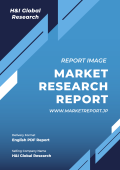1 Preface
2 Scope and Methodology
2.1 Objectives of the study
2.2 Stakeholders
2.3 Data Sources
2.3.1 Primary Sources
2.3.2 Secondary Sources
2.4 Market Estimation
2.4.1 Bottom-Up Approach
2.4.2 Top-Down Approach
2.5 Forecasting Methodology
3 Executive Summary
4 Introduction
4.1 Overview
4.2 Key Industry Trends
5 Global Tartaric Acid Industry
5.1 Market Overview
5.2 Market Performance
5.2.1 Volume Trends
5.2.2 Value Trends
5.3 Impact of COVID-19
5.4 Price Analysis
5.4.1 Key Price Indicators
5.4.2 Price Structure
5.4.3 Price Trends
5.5 Market Breakup by Region
5.6 Market Breakup by End-Use
5.7 Market Forecast
5.8 SWOT Analysis
5.8.1 Overview
5.8.2 Strengths
5.8.3 Weaknesses
5.8.4 Opportunities
5.8.5 Threats
5.9 Value Chain Analysis
5.9.1 Overview
5.9.2 Research and Development
5.9.3 Raw Material Procurement
5.9.4 Manufacturing
5.9.5 Marketing
5.9.6 Distribution
5.9.7 End-Use
5.10 Porters Five Forces Analysis
5.10.1 Overview
5.10.2 Bargaining Power of Buyers
5.10.3 Bargaining Power of Suppliers
5.10.4 Degree of Rivalry
5.10.5 Threat of New Entrants
5.10.6 Threat of Substitutes
5.11 Key Market Drivers and Challenges
5.12 Imports and Exports
6 Market Breakup by End-Use
6.1 Food and Beverages
6.1.1 Market Trends
6.1.2 Market Forecast
6.2 Non-Food Applications
6.2.1 Market Trends
6.2.2 Market Forecast
7 Performance by Region
7.1 Europe
7.1.1 Market Trends
7.1.2 Market Forecast
7.2 North America
7.2.1 Market Trends
7.2.2 Market Forecast
7.3 Asia Pacific
7.3.1 Market Trends
7.3.2 Market Forecast
7.4 Middle East and Africa
7.4.1 Market Trends
7.4.2 Market Forecast
7.5 Latin America
7.5.1 Market Trends
7.5.2 Market Forecast
8 Competitive Landscape
8.1 Competitive Structure
8.2 Key Player Profiles
9 Tartaric Acid Manufacturing Process
9.1 Product Overview
9.2 Chemical Reactions Involved
9.3 Detailed Process Flow
9.4 Raw Material Requirements
9.5 Mass Balance and Feedstock Conversion Rate
10 Tartaric Acid: Feedstock Analysis
10.1 Maleic Anhydride
10.1.1 Market Performance
10.1.2 Price Trends
10.1.3 Market Breakup by Region
10.1.4 Market Breakup by End-Use
10.1.5 Major Players
10.2 Hydrogen Peroxide
10.2.1 Market Performance
10.2.2 Price Trends
10.2.3 Market Breakup by Region
10.2.4 Market Breakup by End-Use
10.2.5 Major Players
Figure 2: Global: Tartaric Acid Market: Volume Trends (in 000’ Tons), 2017-2022
Figure 3: Global: Tartaric Acid Market: Value Trends (in Billion US$), 2017-2022
Figure 4: Global: Tartaric Acid Market: Average Prices (in US$/Ton), 2017-2022
Figure 5: Tartaric Acid Market: Price Structure
Figure 6: Global: Tartaric Acid Market: Breakup by Region (in %), 2022
Figure 7: Global: Tartaric Acid Market: Breakup by End-Use (in %), 2022
Figure 8: Global: Tartaric Acid Market Forecast: Volume Trends (in 000’ Tons), 2023-2028
Figure 9: Global: Tartaric Acid Market Forecast: Value Trends (in Billion US$), 2023-2028
Figure 10: Global: Tartaric Acid Market Forecast: Average Prices (in US$/Ton), 2023-2028
Figure 11: Global: Tartaric Acid Industry: SWOT Analysis
Figure 12: Global: Tartaric Acid Industry: Value Chain Analysis
Figure 13: Global: Tartaric Acid Industry: Porter’s Five Forces Analysis
Figure 14: Global: Tartaric Acid Market: Food and Beverage Applications (in 000’ Tons), 2017 & 2022
Figure 15: Global: Tartaric Acid Market Forecast: Food and Beverage Applications (in 000’ Tons), 2023-2028
Figure 16: Global: Tartaric Acid Market: Non-Food Applications (in 000’ Tons), 2017 & 2022
Figure 17: Global: Tartaric Acid Market Forecast: Non-Food Applications (in 000’ Tons), 2023-2028
Figure 18: Europe: Tartaric Acid Market (in 000’ Tons), 2017 & 2022
Figure 19: Europe: Tartaric Acid Market Forecast (in 000’ Tons), 2023-2028
Figure 20: North America: Tartaric Acid Market (in 000’ Tons), 2017 & 2022
Figure 21: North America: Tartaric Acid Market Forecast (in 000’ Tons), 2023-2028
Figure 22: Asia Pacific: Tartaric Acid Market (in 000’ Tons), 2017 & 2022
Figure 23: Asia Pacific: Tartaric Acid Market Forecast (in 000’ Tons), 2023-2028
Figure 24: Middle East and Africa: Tartaric Acid Market (in 000’ Tons), 2017 & 2022
Figure 25: Middle East and Africa: Tartaric Acid Market Forecast (in 000’ Tons), 2023-2028
Figure 26: Latin America: Tartaric Acid Market (in 000’ Tons), 2017 & 2022
Figure 27: Latin America: Tartaric Acid Market Forecast (in 000’ Tons), 2023-2028
Figure 28: Tartaric Acid Manufacturing: Detailed Process Flow
Figure 29: Tartaric Acid Manufacturing: Conversion Rate of Feedstocks
Figure 30: Global: Maleic Anhydride Market: Volume Trends (in 000’ Tons), 2017-2022
Figure 31: Global: Maleic Anhydride Market: Average Prices (in US$/Tons), 2017-2022
Figure 32: Global: Maleic Anhydride Market: Breakup by Region (in %), 2022
Figure 33: Global: Maleic Anhydride Market: Breakup by End-Use (in %), 2022
Figure 34: Global: Hydrogen Peroxide Market: Volume Trends (in 000’ Tons), 2017-2022
Figure 35: Global: Hydrogen Peroxide Market: Average Prices (in US$/Tons), 2017-2022
Figure 36: Global: Hydrogen Peroxide Market: Breakup by Region (in %), 2022
Figure 37: Global: Hydrogen Peroxide Market: Breakup by End-Use (in %), 2022











